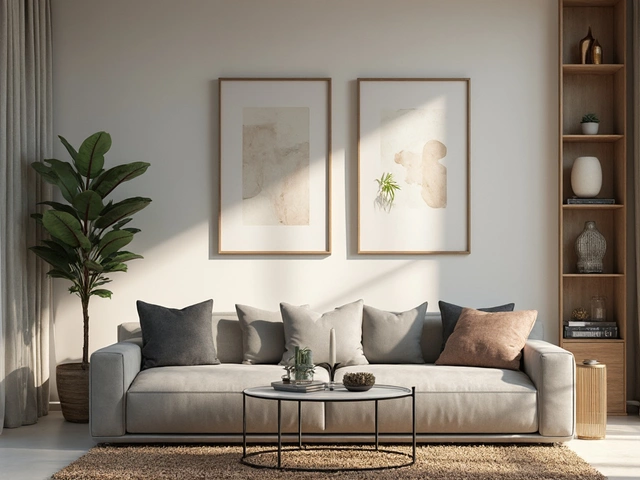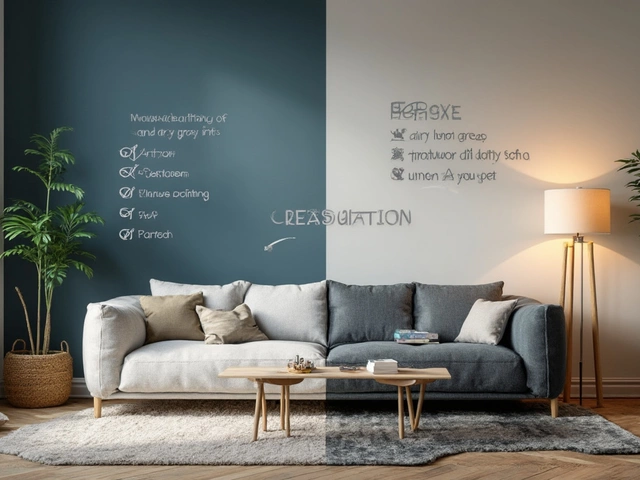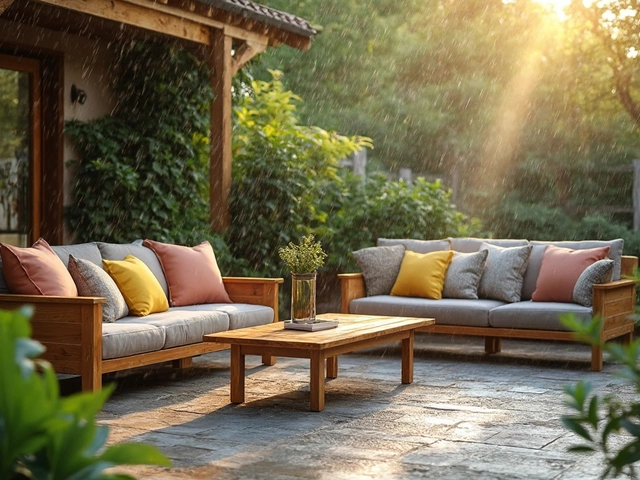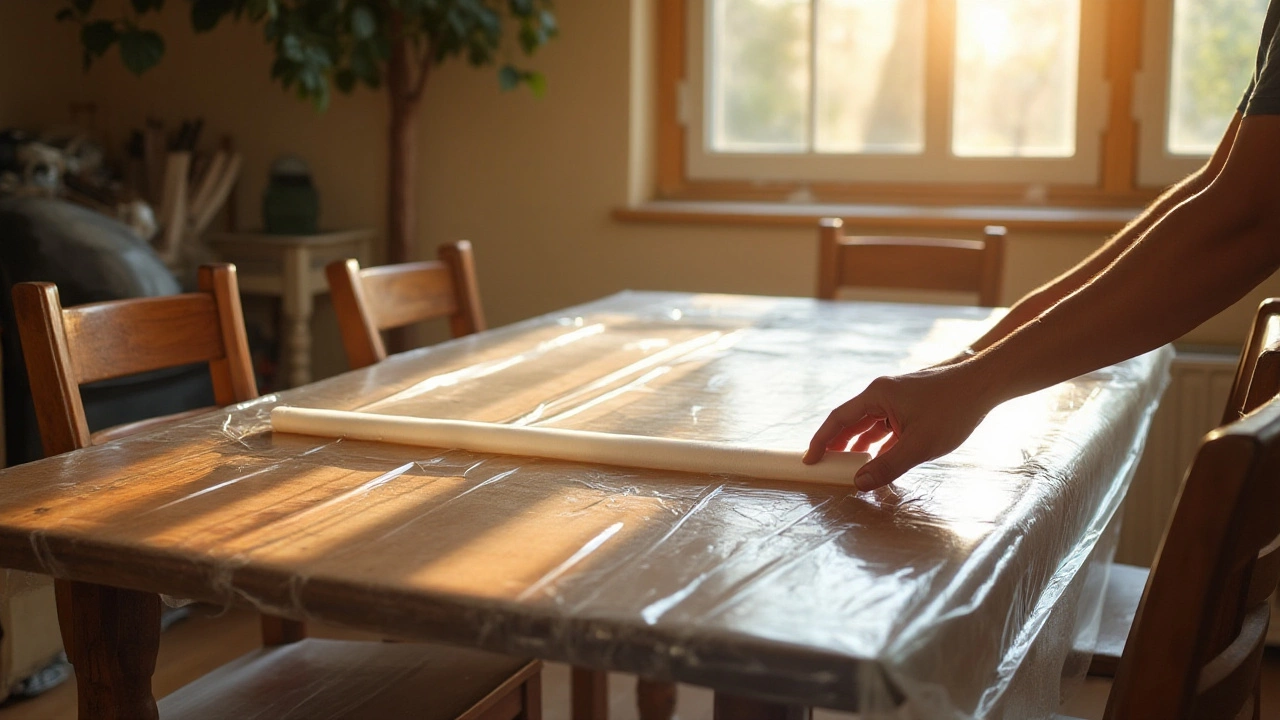
When the day comes to tuck your prized furniture away for safekeeping, making the right choices for wrapping is crucial. We often think about security in terms of locks and sturdy walls, but for our furniture, security comes from the materials we encase it in.
There’s a wide range of wrapping materials, each bringing its own strengths to the table. From guarding against dust and moisture to preventing scratches, choosing the right material ensures your furniture remains as beautiful as the day you packed it away.
Whether you're looking for eco-conscious solutions or need to stick to a tight budget, knowing your options can ease the process and protect your investment. With a few handy tips, you’ll be packing like a pro, and your furniture will thank you for it when it's time to bring it back to light.
- Understanding Furniture Material Needs
- Popular Furniture Wrapping Materials
- Eco-Friendly Wrapping Solutions
- Cost-Effective Wrapping Options
- Tips for Wrapping Furniture Efficiently
Understanding Furniture Material Needs
Before wrapping your furniture, it's vital to understand the unique demands of different materials used in its construction. Wood, metal, and fabric each have distinct needs when it comes to protection during storage. Wooden furniture, for instance, is particularly sensitive to changes in temperature and humidity. These fluctuations can lead to cracks, warping, or even mold if not properly shielded. Ensuring the material is dry before it's covered can minimize these issues. Protective coverings like soft blankets or bubble wrap can cushion the wood against physical impacts while allowing space for air circulation, crucial to prevent mold growth.
Metal furniture often faces the threat of rust and corrosion in poorly maintained storage environments. For these pieces, a moisture barrier material is essential to keep the elements at bay. Using wax paper or specially designed furniture wraps can create an effective shield against moisture. Ensuring metal surfaces are clean before packing also plays a significant role in preventing rust. It's often noted in industry that the condition of the metal plays a larger role in its longevity compared to the storage environment itself. Regular maintenance helps as well, and a thin layer of oil can also be applied as an added protective measure.
When it comes to fabric pieces like sofas and chairs, dust, pests, and moisture are the main culprits to guard against. Fabric is notorious for absorbing smells and moisture, leading to musty odors and stubborn stains. For these reasons, it's often recommended to lean towards breathable covers, like cotton sheets or covers specifically designed for furniture packing, which can protect against unwelcome invaders like insects without trapping moisture. Always consider cleaning the fabric beforehand, and when wrapping, avoid tightly compressing the fabric to keep its shape over time.
"Furniture care is more than just maintenance; it's an art of preservation," said a spokesperson from the Furniture History Society, underlining the importance of understanding your furniture’s material needs for optimal longevity.
Finally, if your home boasts composite materials or mixed-media furniture design, it's wise to tailor your wrapping strategy to cater to each material's needs. Each layer should reflect the specific protection needed, successfully shielding your furniture from the diverse elements they could face. Reliable product knowledge and attentiveness to your furniture’s material composition is key in preserving their quality during storage.
Popular Furniture Wrapping Materials
When preparing your cherished pieces for storage, deciding on the right furniture wrapping materials can make all the difference. One of the most commonly used materials is moving blankets. These heavy-duty cloths provide a layer of cushioning that protects wooden or metal surfaces from scratches and minor dents. They are famously favored not just by homeowners, but moving professionals across the globe swear by them as a go-to for high-value furniture items. An additional benefit is their reusability, which means they are an eco-friendly choice for the environmentally conscious.
Another emerging favorite in the furniture safeguarding domain is bubble wrap. Known for its tirelessly undeniable effectiveness, bubble wrap is ideal for delicate and intricately designed pieces. The air-filled pockets act as a buffer against sudden impacts, making bubble wrap a staple in the storage arsenal. For upholstered furniture, plastic shrink wrap is often recommended. It offers robust protection against dust and moisture, ideal for when furniture is stored for longer periods or in less-than-ideal conditions.
For those who prefer a traditional approach, furniture pads offer a reliable option and maintain simplicity in their application. Made from a variety of materials, including cotton and polyester, they balance protection and cost efficiently. According to the moving expert Andy Major, “Furniture pads are like the Swiss Army knife in the world of storage solutions, they fit around just about anything and provide solid protection.”
Some folks lean towards cardboard as a cost-effective wrapping solution. While it may not provide the tender loving care of other options, it serves as a protective barrier, especially when packing items for transit. A more recent trend sees biodegradable packing peanuts and wrapping paper gaining popularity as people tilt towards eco-friendly alternatives. These materials break down easily, lessening harm on the planet. With all these options, it’s clear that choosing the right material is about balancing protection, environmental impact, and budget, all while keeping your prized furniture intact.
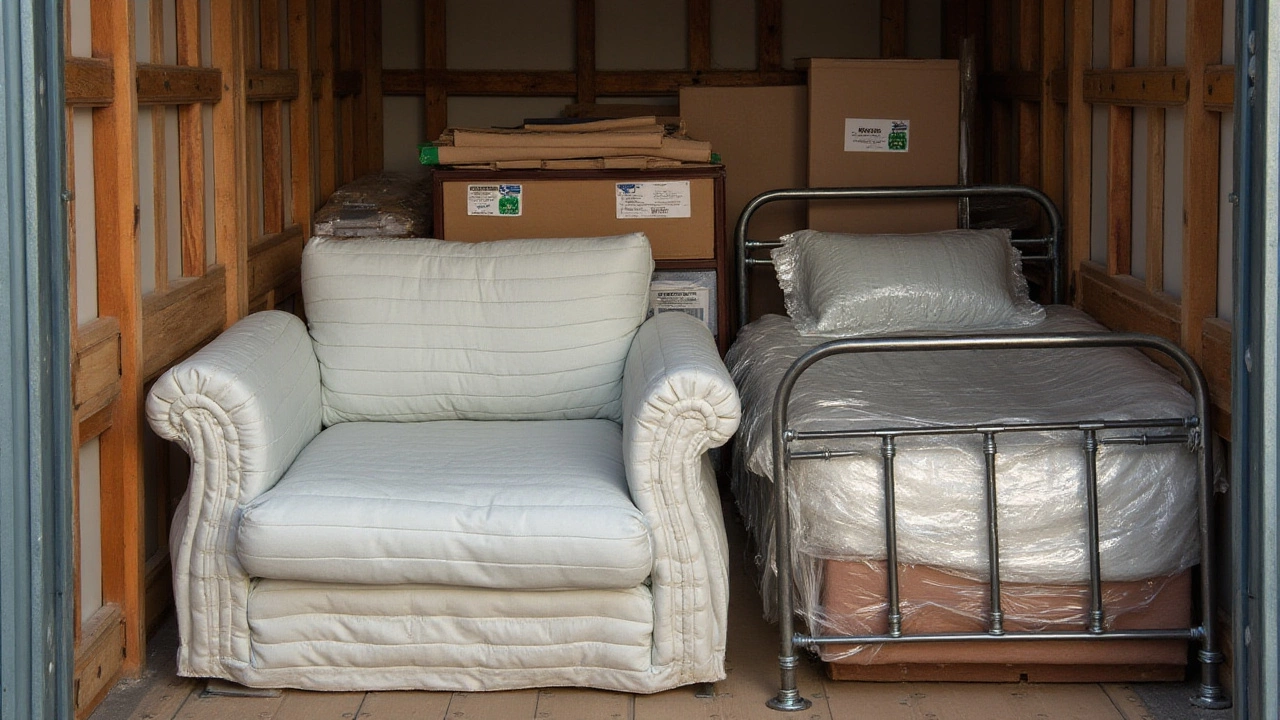
Eco-Friendly Wrapping Solutions
In a world where environmental concerns are becoming increasingly pressing, finding ways to protect our furniture while also protecting our planet is more crucial than ever. Choosing eco-friendly wrapping solutions is a great step towards this. These options not only help in maintaining the quality of your furniture but also reduce waste and carbon footprint. One remarkable material that has gained popularity is recycled packing paper. Unlike its traditional counterparts, recycled paper performs equally well in providing a cushion against dents and scratches. Companies producing this paper often use post-consumer waste, which means less energy and resources are used in its production.
Moving on, let's talk about biodegradable packing peanuts which are taking over the market traditionally dominated by non-compostable equivalents. Made from renewable sources like corn starch or sorghum, these earth-friendly peanuts decompose naturally and can often dissolve in water without a trace. It's a win-win situation – protecting your furniture and the earth at the same time. While their structural integrity is commendable, their environmentally friendly nature makes them an excellent choice.
Reusable Bins and Blankets
Opting for reusable storage bins and blankets is also a wise choice for those looking for sustainable ways to wrap furniture. Storage bins made from recycled plastics are sturdy and offer a protective barrier against dust and moisture. These bins are great for small furniture items or home essentials that require extra care. On the other hand, furniture wrapping blankets made from recycled cotton or wool materials can be utilized multiple times. They offer durable protection, particularly for larger furniture pieces such as sofas or tables. A great tip is to tie these blankets with natural cotton ropes, thus reducing the usage of plastic coverings.
"Every step towards sustainability, no matter how small, contributes to a bigger change," says Dr. Elena Smirnov, an environmental scientist, emphasizing the importance of opting for eco-friendly solutions.
In addition, there are many innovative products emerging in the market, aimed at promoting sustainability. For instance, the development of biodegradable bubble wrap presents a fascinating alternative. Traditional bubble wrap derives from polyethylene, but its biodegradable cousin is formulated to break down faster after it's used. If you're into a do-it-yourself approach, consider using materials already in your home. Old newspapers, shredded paper, or even linens can serve as makeshift padding. This creative approach cuts down on purchasing additional packing materials and gives you a chance to minimize waste effectively.
| Eco-Friendly Option | Environmental Benefit |
|---|---|
| Biodegradable Packing Peanuts | Completely breaks down and leaves no residue |
| Recycled Packing Paper | Uses post-consumer waste, reducing resource use |
| Reusable Storage Bins | Reduces single-use plastic waste |
By choosing these eco-friendly options, you embrace a lifestyle that is gentle on the environment without compromising on protection. It's incredible how small, seemingly minor decisions can contribute to a healthier planet, ensuring that what's good for your furniture is also good for your future.
Cost-Effective Wrapping Options
When it comes to protecting your beloved furniture without breaking the bank, exploring cost-effective wrapping options can be incredibly rewarding for both your wallet and sanity. Often, the best solutions come from thinking beyond new, extensive purchases, using creativity and a touch of awareness about materials you might already have at hand. For instance, many households have old sheets or blankets that, while perhaps outdated in fashion, still provide excellent padding against dings and scratches, especially for wooden surfaces or delicate items like mirrors and glass. Concealed within closet spaces across the world, they represent a thrifty individual's dream for reuse.
Another budget-friendly method involves using moving pads or furniture blankets, commonly found at moving companies or rental stores. They are thick, dense, and offer exceptional protection for your furniture. While renting such pads for a move is typical, asking for a discount on slightly worn ones could get you a deal that’s too good to pass up. Even a modest investment here pays dividends in safeguarding against potential damage during moves or storage.
Bubble wrap, often a favorite for packaging fragile items, might seem expensive when purchased new. However, buying in bulk or sourcing recycled bubble wrap can be surprisingly economical, and combined with old newspapers, becomes an ideal protection layer for smaller furniture parts or accents. Newspapers, due to their padding ability and availability, serve as effective fillers to guard against shocks.
A saying often attributed to household wisdom suggests, “Reuse leaves resources intact, save the earth and money too.” Whether or not it's attributed accurately here, the principle holds true in every family basement and attic filled with hidden treasures.
Eco-friendly options take the economic route a step further. Recycled cardboard can be a savior in wrapping surfaces, acting as barriers that absorb pressure and prevent scuffs. When laying your hands on left-over refrigerator or television boxes, transforming them into custom-fit sleeves for chairs and parts of disassembled furniture not only provides needed protection but does so with minimal environmental impact. With scissors, tape, and a touch of effort, they can rival—and often surpass—more expensive wrapping solutions.
| Material | Cost-Efficiency | Protection |
|---|---|---|
| Old Linens | High | Moderate |
| Moving Pads | Moderate-High | High |
| Recycled Cardboard | Low | Moderate |
| Bubble Wrap | Moderate | High |
Lastly, sharing resources within a community could be the key to not just cut down costs but also imbue some eco-conscious camaraderie. Neighbors or friends who moved recently might have surplus materials they don’t mind parting with. An informal group of people sharing and exchanging materials can be more effective than initially imagined, blending conservation with community spirit.
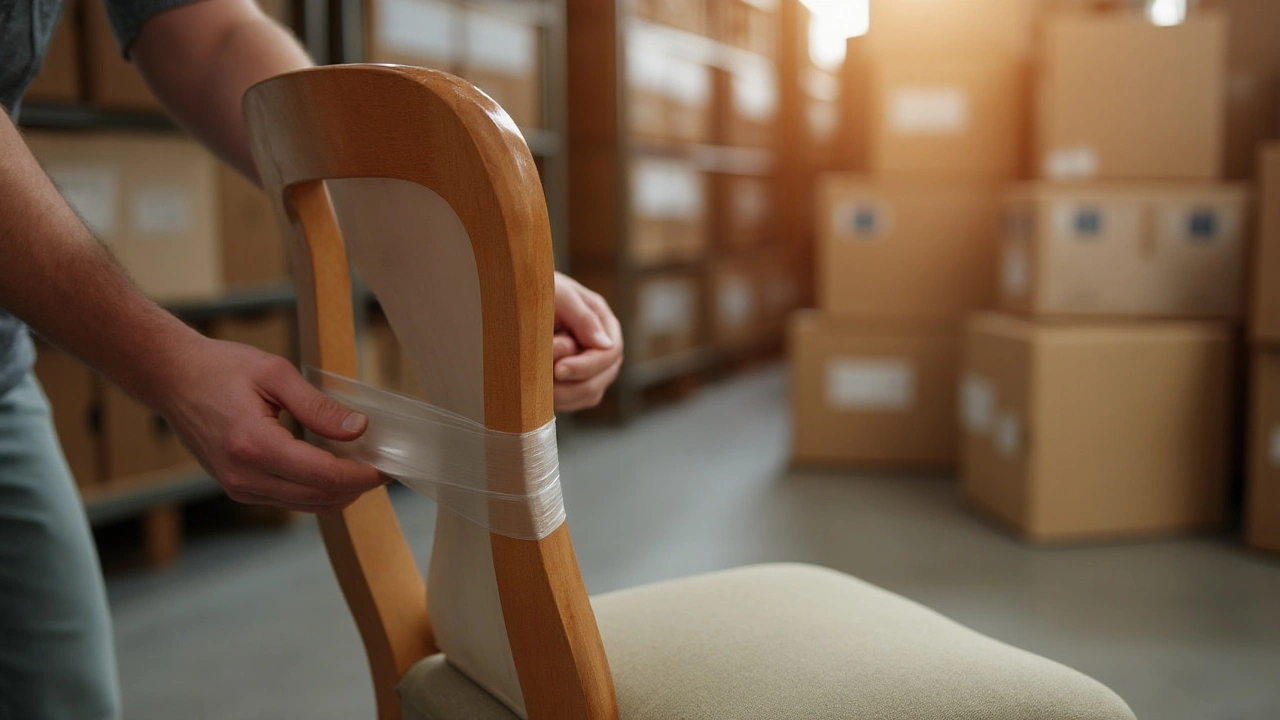
Tips for Wrapping Furniture Efficiently
Wrapping furniture efficiently is not just about slapping on some bubble wrap and calling it a day. There's a lot to consider to ensure your furniture remains unscathed, especially when it comes to choosing the right furniture wrapping techniques. First off, preparation is key. Before you even pick up your tape and wrap, clean every piece of furniture thoroughly. Dust and dirt can scratch surfaces, especially under the pressure exerted by wrapping materials. Use a soft, damp cloth to wipe down surfaces and make sure everything is dry before wrapping, as moisture can lead to mold, especially during long-term storage. When taping, avoid placing tape directly on the surfaces of your furniture to avoid unsightly residue marks.
When it comes to choosing wrapping materials, different types of furniture need different kinds of protection. For instance, wooden furniture requires breathable materials like blankets to prevent moisture build-up, which could warp the wood. On the other hand, upholstered pieces benefit from plastic wrap to keep them safe from dust and pests. During this stage, precision is equally vital. Use precise cuts of materials so that they fit snugly around the furniture, avoiding excess material which can make stacking or arranging difficult.
Efficiency cannot be spoken of without mentioning the importance of labeling. Once your furniture is securely wrapped, label each piece with its destination room or specific handling instructions. This is especially useful if you're moving house or storing items for an extended period. An additional tip is to keep an inventory list of everything you've packed and wrapped, detailing what materials were used and any special notes. This ensures that when you retrieve your furniture, everything is just as it was stored. As the saying goes, “Preparation is the key to everything,” and such thorough preparatory steps save you headaches later.
Space management is also crucial in efficiently wrapping and storing furniture. If you're packing items into a storage unit or a moving truck, plan out your space beforehand. Place larger, heavier items on the bottom, and stack lighter items on top. Use any spare blankets or bubble wrap as gap fillers to prevent items from shifting during transit or storage. Keep an eye out for any spaces that seem prone to movement and add extra padding if necessary.
“The manner of the wrapping not only reflects the care given but also the outcome upon unwrapping,” says expert furniture dealer Michael Summerson, who has witnessed too many avoidable tragedies due to poor wrapping techniques.
Lastly, remember that wrapping is not a one-size-fits-all endeavor. Each piece of furniture is unique, with its own set of needs when it comes to protection. Always consider the materials that make up your furniture and choose your wrapping strategy accordingly. A little knowledge and effort go a long way in safeguarding your furniture during storage or transit, ensuring that no piece is left vulnerable to scratches, dust or any potential damage.

